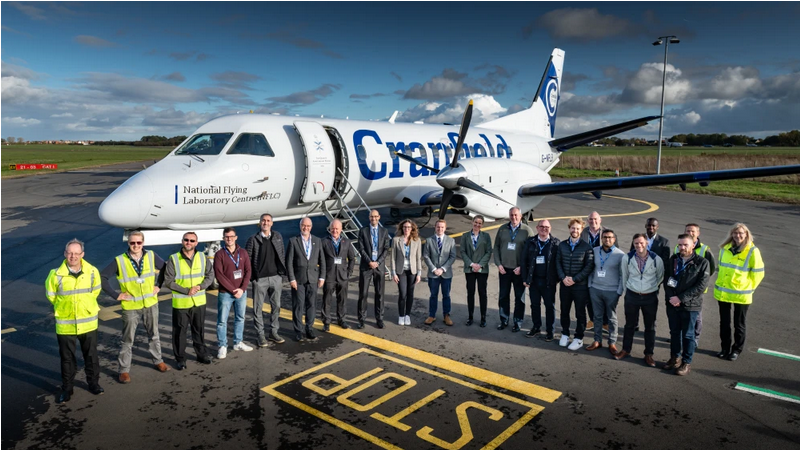Viasat demos potential UK aircraft guidance solution
January 22, 2024
By Chris Forrester

Since Brexit, the UK has been barred from using the European Union’s sophisticated EGNOS aircraft landing and positioning safety system.
The European Geostationary Navigation Overlay Service (EGNOS) is Europe’s regional satellite-based augmentation system (SBAS) that is used to improve the performance of global navigation satellite systems (GNSSs), such as GPS and Galileo. It has been deployed to provide safety of life navigation services to aviation, maritime and land-based users over most of Europe.
Viasat is prepared to step into this gap and has demonstrated how it could match and perhaps improve on the EU’s EGNOS system. It conducted a series of test flights with an aircraft equipped with Viasat satellite equipment.
Viasat’s proposal uses an old satellite (Inmarsat’s I-3 F5) which is 24 years-old.
The Viasat test flight was flown from Cranfield Airport in December 2023 and used the UK’s National Flying Laboratory Centre’s Saab 340B aircraft. Viasat revealed details of the successful demonstration on January 18.
The UK SBAS system brings together ground monitoring data with satellite connectivity. Viasat claims that the combination makes ground and in-flight positioning accurate to a few centimetres rather than the few metres under EGNOS. While in flight the system permits pilots greater ability to locate a runway even when it is badly affected by weather.
Viasat’s information says that close to 40 percent of flights cancelled because of bad weather could have gone ahead had this UK SBAS system been available. Around the UK, 19 airports had EGNOS procedures in place prior to leaving the European Union. In total, as many as 72 airports no longer have access says Viasat.
Viasat suggests that their proposal could be used for train operators, drone flights and future autonomous road vehicles.
Participants in the trial included the Goonhilly Earth Station, CGI UK, GMV, Ordnance Survey, Cranfield University, the Cranfield National Flying Laboratory Centre, and Pildo Labs.
The UK’s Technology Minister at the Department for Transport, Anthony Browne said “This successful demonstration illustrates the UK’s first-class space sector, and our capabilities in position, navigation and timing specifically. The project, fully funded by Government through the ESA NAVISP programme, is directly supporting our work on future provision of high-accuracy, high-integrity positioning services, which could increase efficiency and enable new innovations across the transport network.”
“This trial on a sovereign UK SBAS is all about delivering trust. Trust for pilots in their tracking systems so they can stay safe in challenging conditions. Trust for the aviation industry more broadly so it can rely on data to operate more efficiently. And, in the future, trust that we can use highly accurate tracking to develop Britain’s transport system as new technologies come into play. We’re excited to continue the trial and see how far we can take it,” said Todd McDonnell, President of International Government for Viasat.
